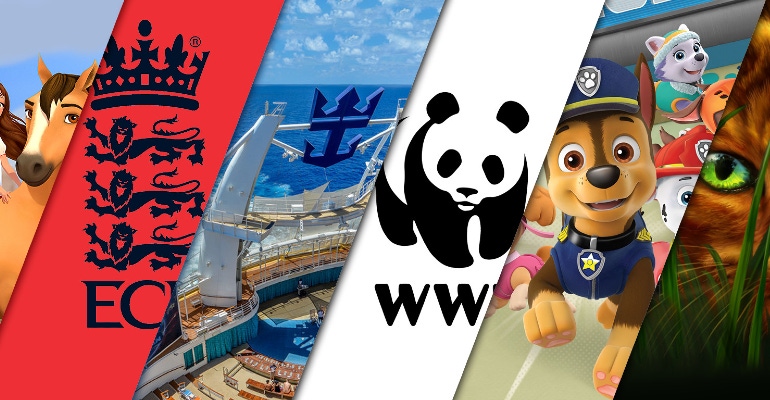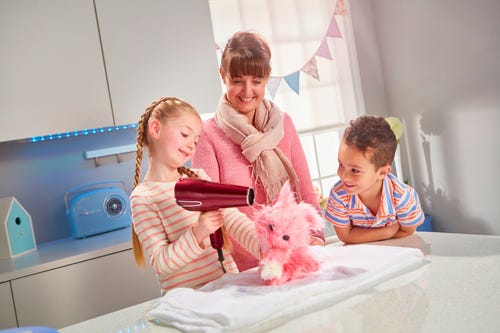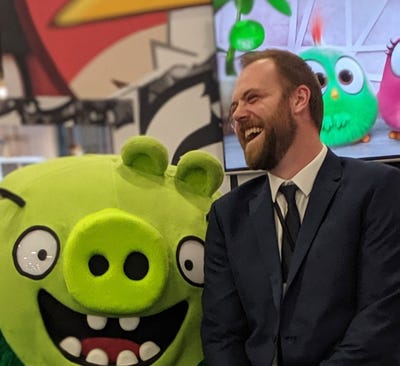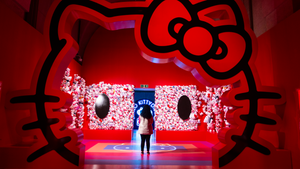License Global speaks exclusively with Gary Pope and Jelena Stosic of Kids Industries, who reveal what toy trends to expect in 2020.

As toy fair season enters full swing once again, License Global asks Kids Industries what trends are emerging in the kids’ space, and what play patterns will define the year for the toy business.
Unboxing 3.0
“Unboxing still works its magic on children,” says Jelena Stosic, director, strategy, Kids Industries.
“At its core, it’s about a surprise, which is a powerful dynamic. Unboxing 1.0 used the surprise element almost exclusively (i.e., Kinder Surprise). Over the last two years, the industry moved this forward to ‘Unboxing 2.0’ to add more to the experience, often by making the unboxing process even more playful (i.e., L.O.L. Dolls or Flush Force).”
“More recently, we’re seeing unboxing take place through transformation – the toy is slowly revealed, often through some effort on behalf of the child,” adds Stosic. “And so, we get Scruf-a-Luvs that we need to bathe, or Color Reveal Barbie that needs to get dipped into water in order for the actual toy to be shown. The surprise is still there at the point of purchase, but the unboxing process is later enhanced through a moment of chemistry, magic or transformation that can both look visually appealing and feel more personal.”

Loyalty Toys
“We are seeing, and expect to see, more of a rise in loyalty promotions that feature an attractive collectible toy,” says Stosic. “The Little Shop at Marks and Spencer is an example of this trend. The collectible toy range featured ‘mini items’ from the shop’s range of merchandise and were presented as shop items that kids could play with. The initiative was heavily criticized in the media, but at the same time, achieved success with a relatively large segment of customers. For example, some pieces were selling for £500 on eBay.”
“From a sustainability perspective, the main question here is, ‘are these toys, or are they disposables?’” adds Stosic. “We also know from our research that some families will treat loyalty toys as toys, as treats for their children, and would resent their disappearance. In times of economic uncertainty, this could be even more the case. What can we, as makers or manufacturers, do to make sure these are toys, not disposables, and that they deliver play value?”
Diverse Superheroes
“We’ve been demanding that the toy industry supports diversity, and rightfully so,” says Stosic. “At the same time, it’s important to acknowledge the entire eco-system that a child exists in. The original diverse toys (whether that’s diversity through sexual orientation, race or ability, for example) often felt like PR vehicles that drove more positive reviews than they drove sales, and it was hard for them to drive sales when the characters and narratives they were based on didn’t fully match up. We are seeing a shift here. The crucial need for diversity is now being increasingly highlighted and delivered across a broad media suite, and both the creation and sales of diverse toys should follow. LGBTQ representation in television has hit an all-time high.”
“As of November 2019, the percentage of returning LGBTQ characters on broadcast cable networks had reached 10.2 percent, up from 8.8 percent in 2018, according to media monitor GLAAD.,” adds Stosic. “As such, toys are being produced to represent a broader range of people, and we now see them serving as more than PR vehicles. Obviously, there is more work to be done, but as we outline next steps we can also celebrate the positive changes. The Kmart Same Sex Family Dolls sold out in most stores in Sydney!”

More Means More
“More features mean more options,” says Stosic. “It increases the likelihood of a toy being liked by either parent or child. Economic pressure means parents may want to hear about more features. There are a couple of ways in which this trend plays. Consistently increasing features and functions, such as the Owlee toy which promotes ‘over 100 sounds and movements,’” means increased interaction. Multiple features can provide an attractive proposition, increase product value and give a good marketing story, but design is essential so as not to confuse kids. It is also worth noting that a lot of children we met who played with Hatchimals used only a small number of functions, so you should not invest equally in all the features.”
What’s in a Toy?
“We ran a study which showed that – in moments where a grownup might be overwhelmed with options and experience analysis paralysis due to being offered too much choice – children are likely to relish the opportunity,” says Stosic.
Screen Free (or ‘Screen Light’) Technology
“It’s almost too easy to assume that tech toys need a screen, but of course, that’s not the case,” says Stosic. “Some of the most wonderful benefits of technology – the interactivity, the feedback loops – can be delivered in other ways, too. Think light, sound or voice, movements, haptic feedback and more. The improvements in technology that we now enjoy allow us to use a variety of techniques to deliver a tech experience and its benefits, without necessarily leading with a screen experience. From play mats to connected blocks, robots and sensor-based objects, we are experiencing a rise in toys, which bring in the innovation but leave the screens out.”
The Call of AR Is Strong
“More and more AR experiences and makers are exploring game play, and how to make it meaningful, more than just ‘an added piece of content,’ and more than a glorified QR code,” says Stosic. “One of the main challenges with this is that there isn’t a natural compatibility between the most genuine reasons and ways in which we play physically – experiment, touch, feel, move around and jump – and the ways in which you play digitally especially on a phone, sitting down, in kids’ case often offline. In adults’ case sitting on a bus.”
“Many AR toys and games released over the past couple of years required that the player wields their phone around an item they built, or around some cards or similar items, which was excellent at creating a moment of ‘wow’ but not as great at sustaining play,” adds Stosic. “It makes the physical play experience more challenging and the digital play experience worse due to having to ‘hover’ around an item, then subsequently, losing it when you move away slightly.
Another option is to only ‘pick up’ the digital code from the physical item, and then recline to play. But the challenge then becomes making those physical items into more than just tokens, into more than glorified, physical ways to do in-app purchases. We’re excited to see solutions from makers such as SwapBots, which deliver an excellent digital game but also feature fun physical elements which can be traded and collected. LEGO Hidden Side going multi-player should also add an interesting layer of allowing users to interact in AR.”
A Tale of Two Consumer Products
“We are most definitely seeing and expecting to keep on seeing a rise in toy companies using more sustainable materials and creating other initiatives in an effort to do better for the environment,” says Stosic. “This ranges from initiatives such as Orchard Toys replacing lost toys, to removing plastic from packaging, exploring how to work within a circular economy (Asda had a ‘Re-Loved’ pop-up shop) and trialling new materials (polymers, vegetables, recycled plastic or cloth). On the other hand, we have the broader ‘speeding up’ of the world and the media putting pressure on faster production cycles.”
“Children’s play - at this moment, at least - is heavily trend led, and these trends can move relatively fast,” adds Stosic. “Those who can put a product out faster may reap benefits in the short term. The goal is to spot trends and have a product on the shelves in a matter of months, or less, rather than for next Christmas. The challenge with trends is that they are often disposable and can, thus, be at opposing ends with the sustainability efforts. But do they have to be? Can companies excel at both? We expect these two approaches to play ‘against’ each other, but also to come closer together over time.”
Trends Come and Go, But Toys Are Still Child’s Play
“We step in and out of trends as different behaviors become more or less popular, but the core ways in which children play are not quick to change,” says Gary Pope, director, Kids Industries. “The novelty in the toy trends we’ve uncovered for 2020 doesn’t come from new play patterns, but rather from diverse media landscapes that shift expectations, innovation in materials and production techniques, different play tools and places to obtain toys.”
Having already delivered our view from London Toy Fair, we look forward to bringing you more from the toy fairs in Nuremberg and New York and linking the exclusive insights with Kids Industries into what we find on the show floor.
About the Author(s)
You May Also Like








